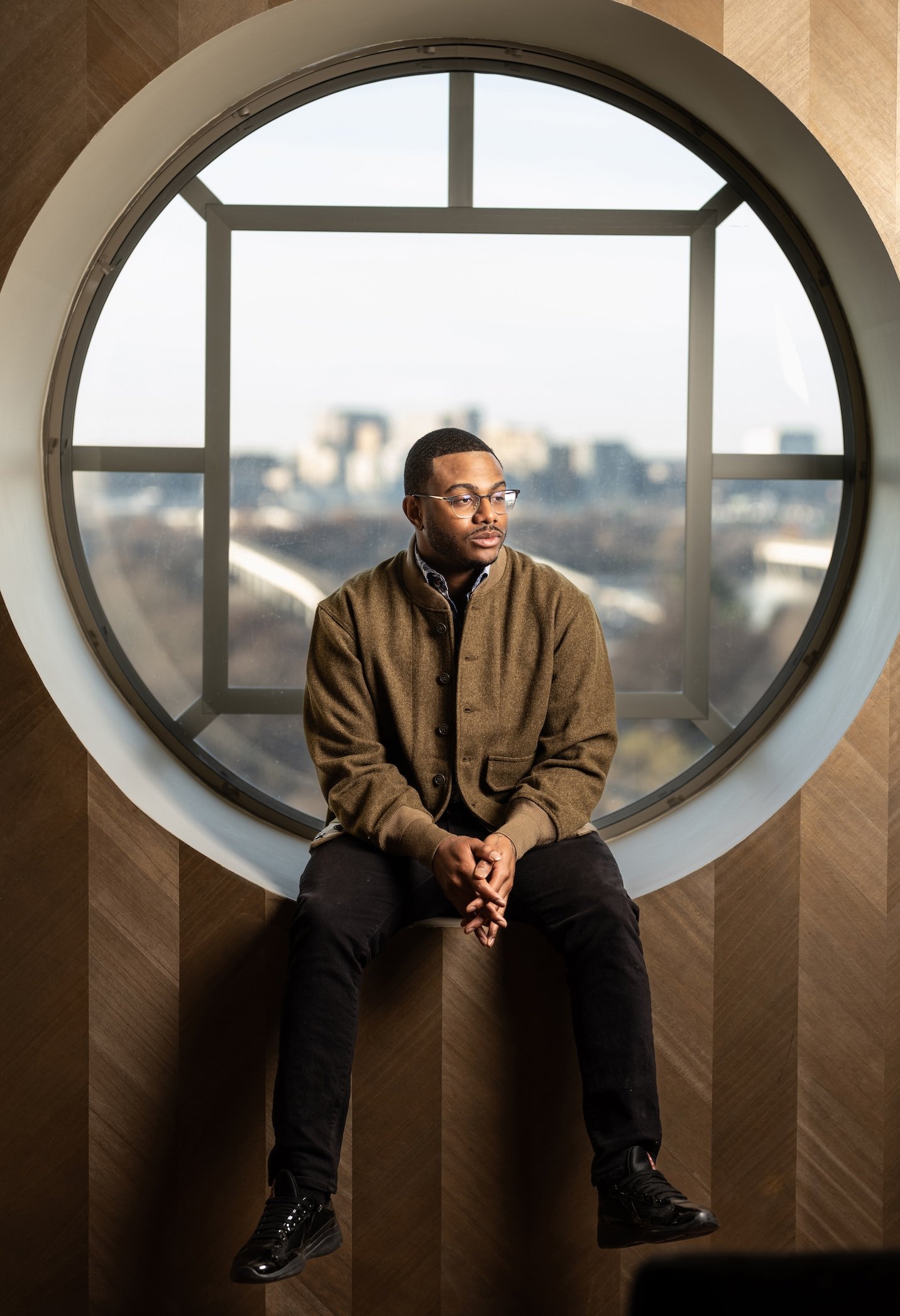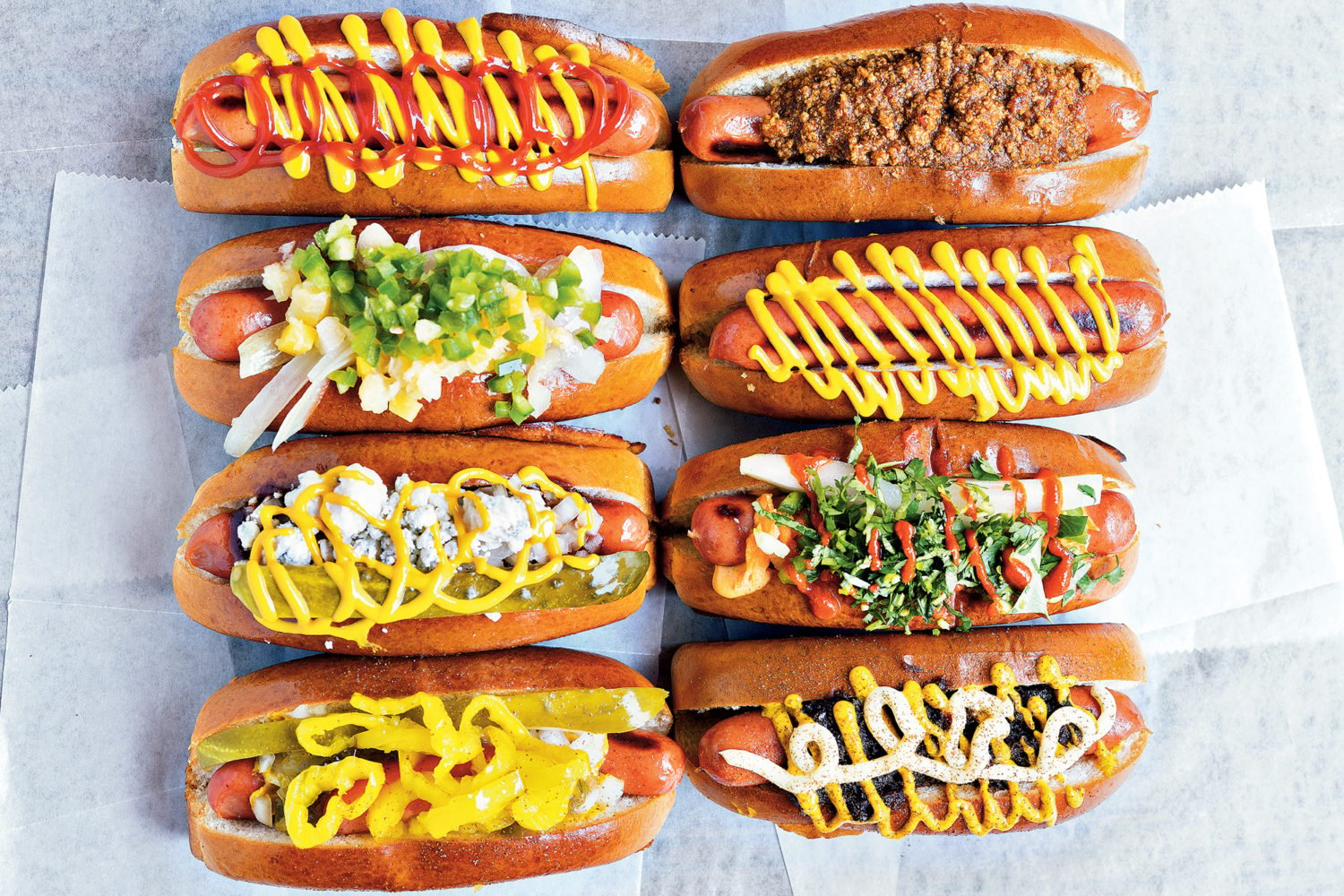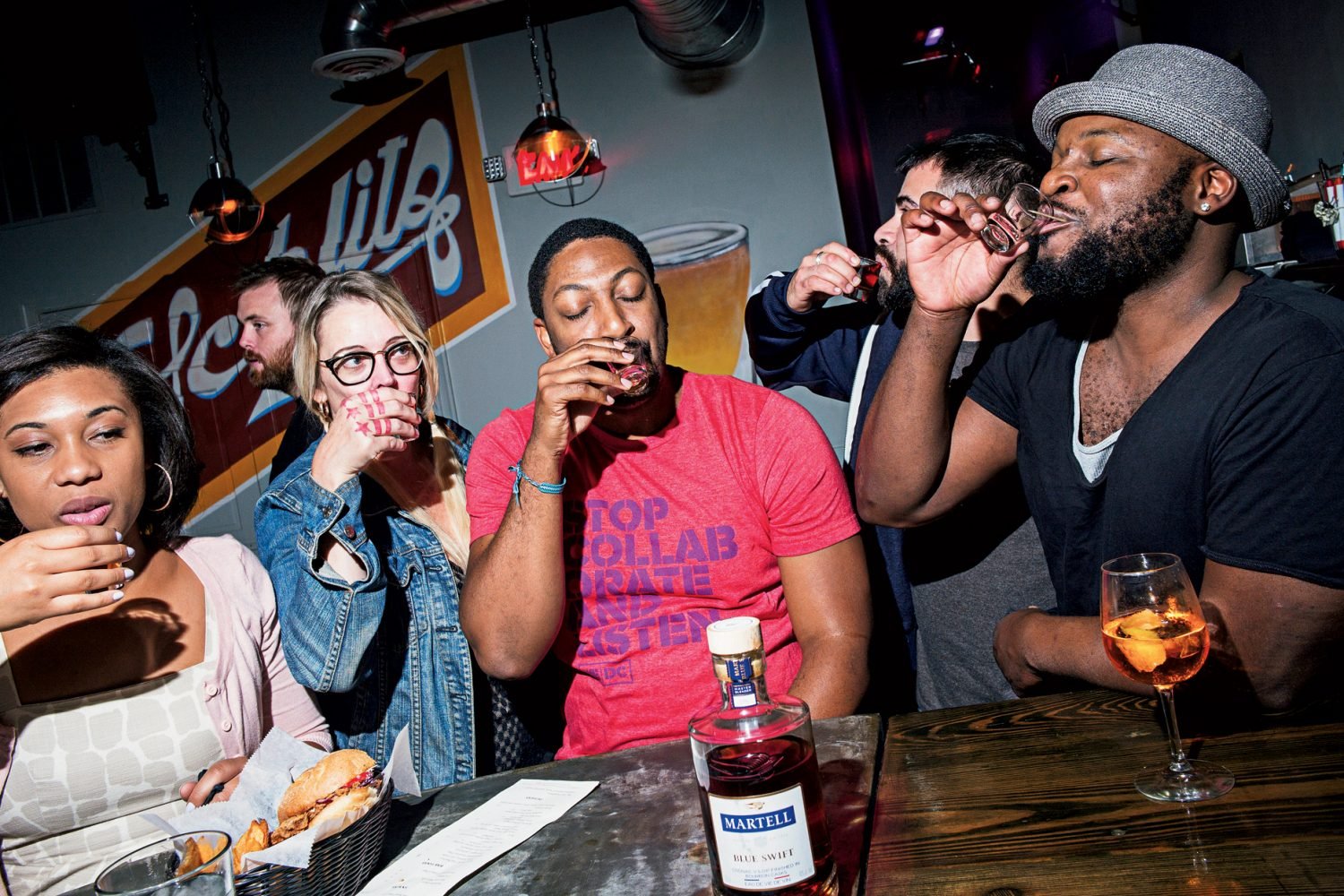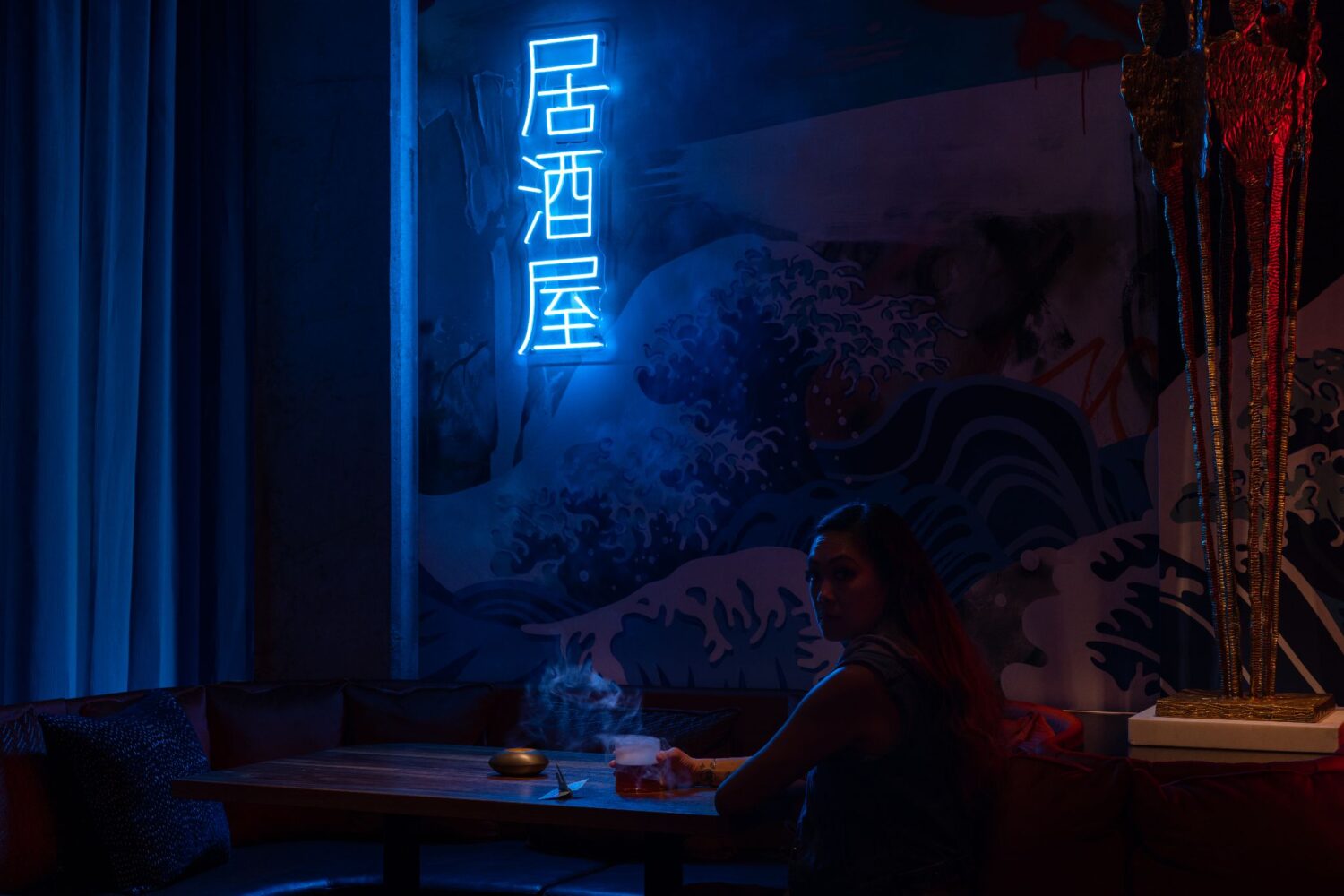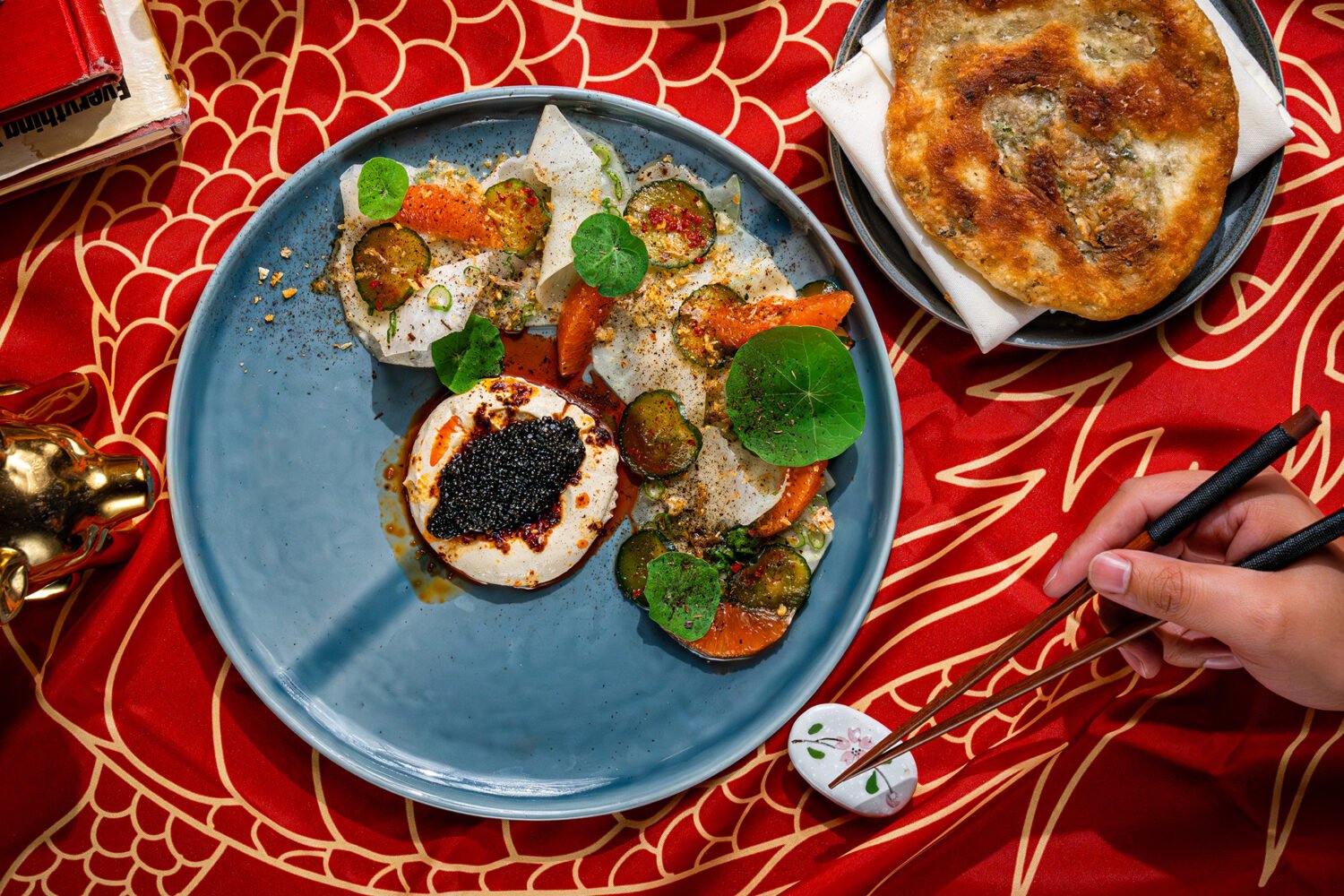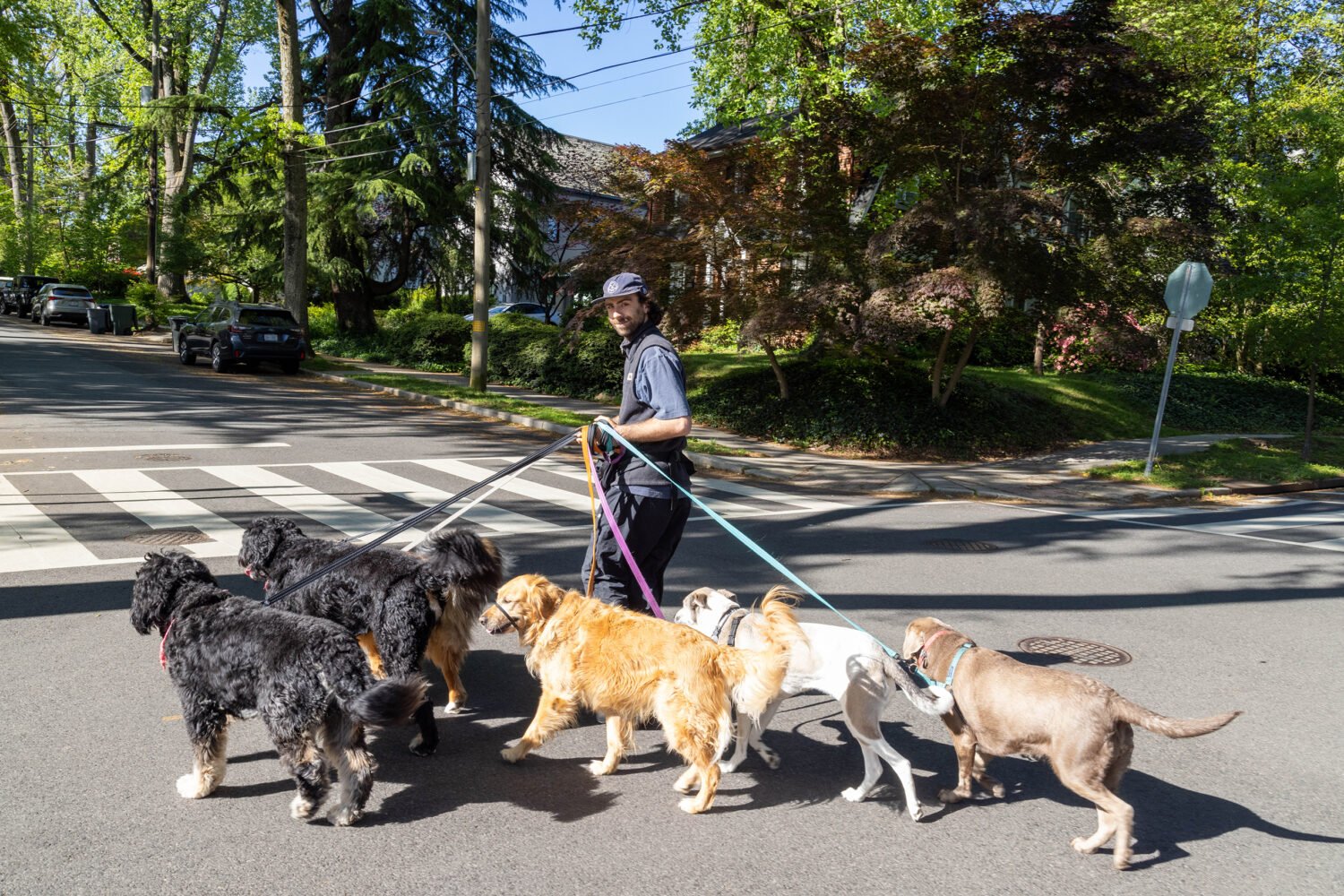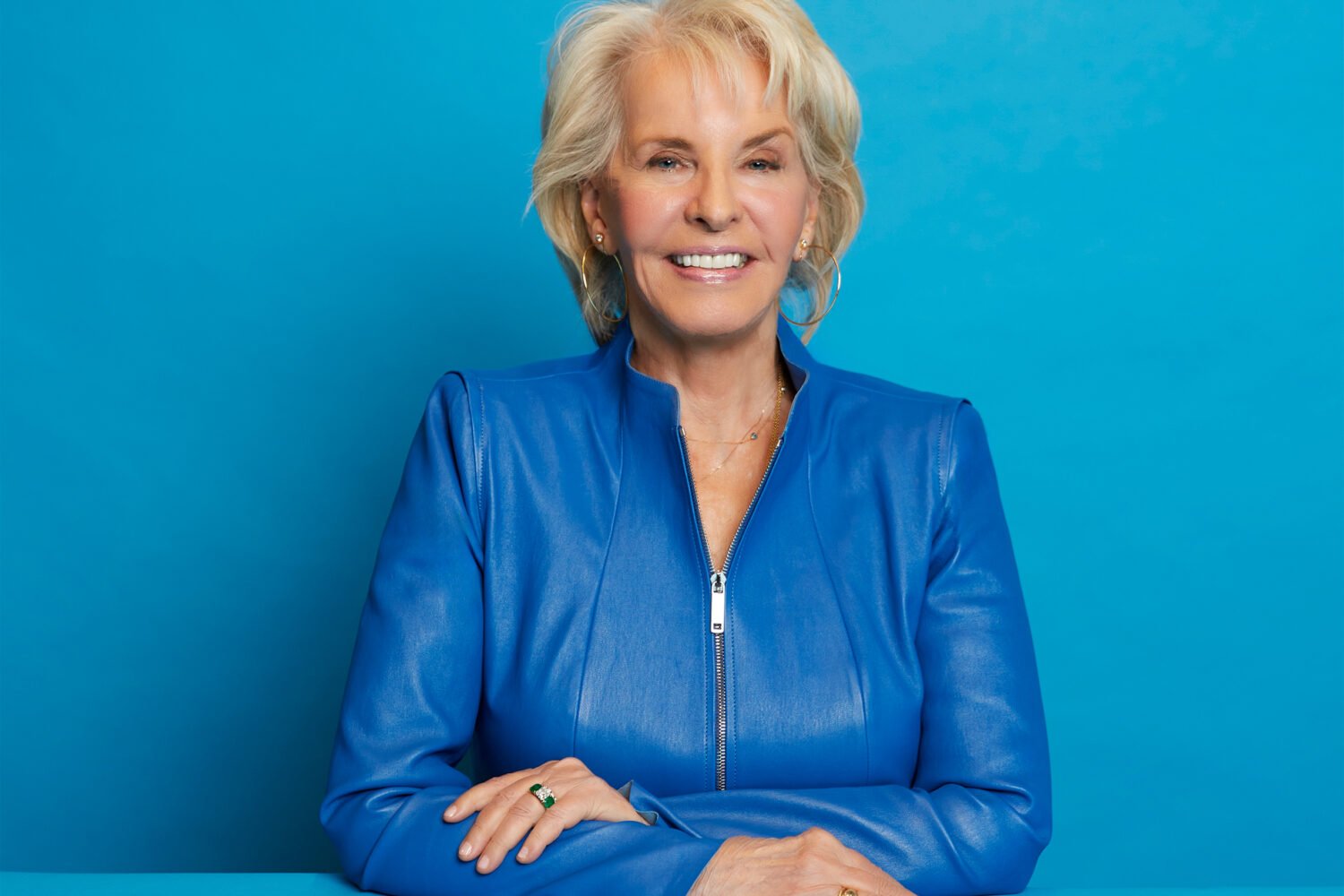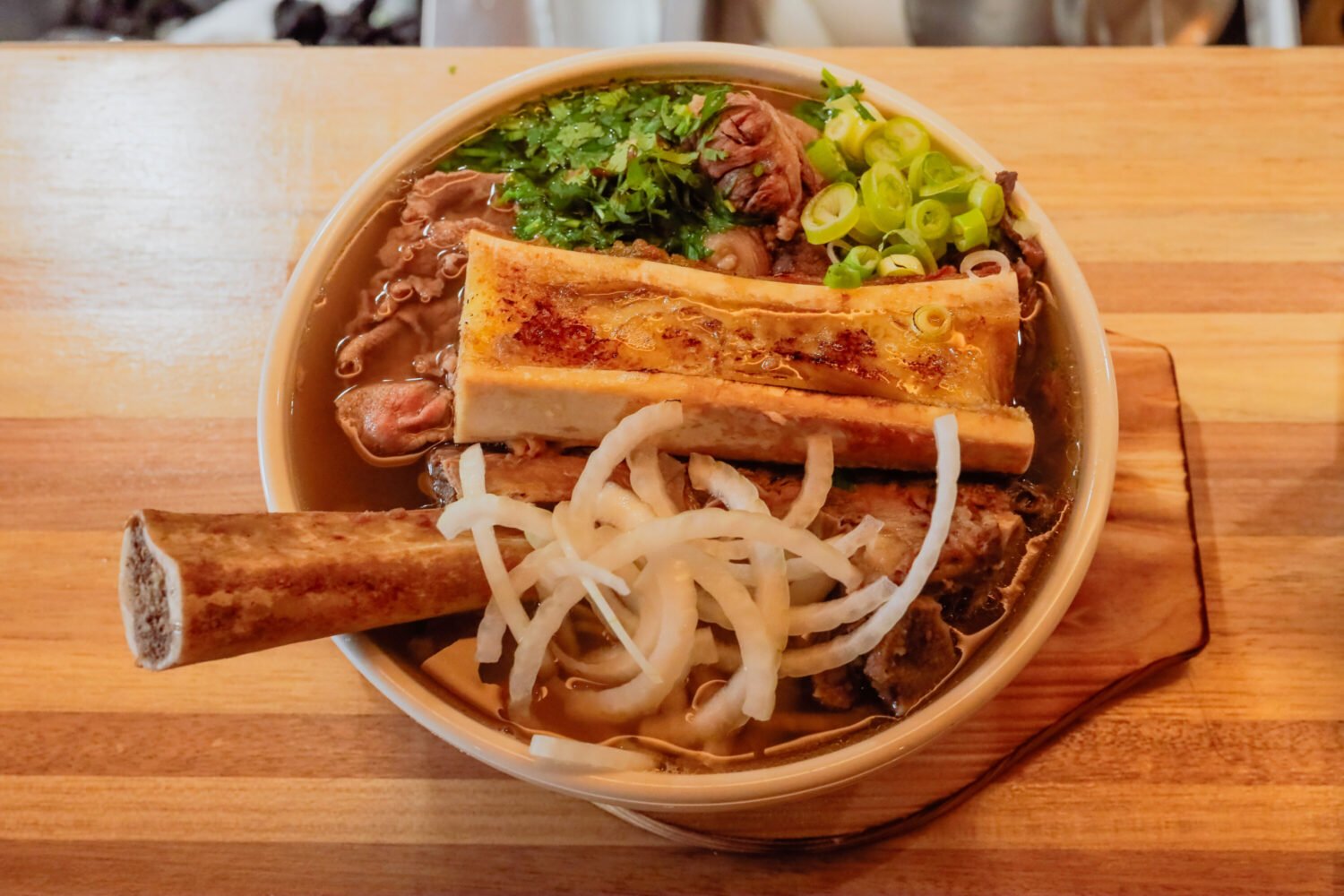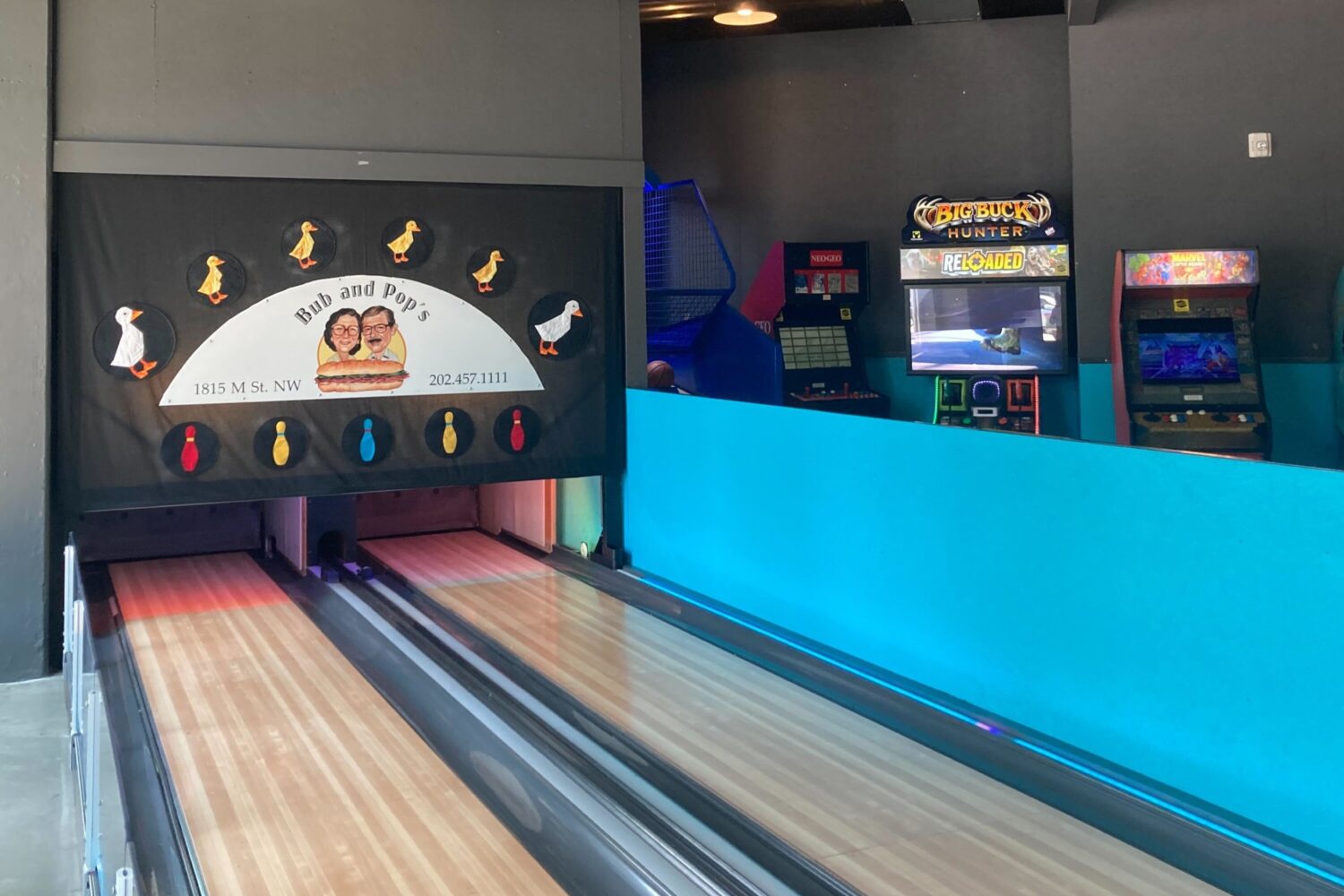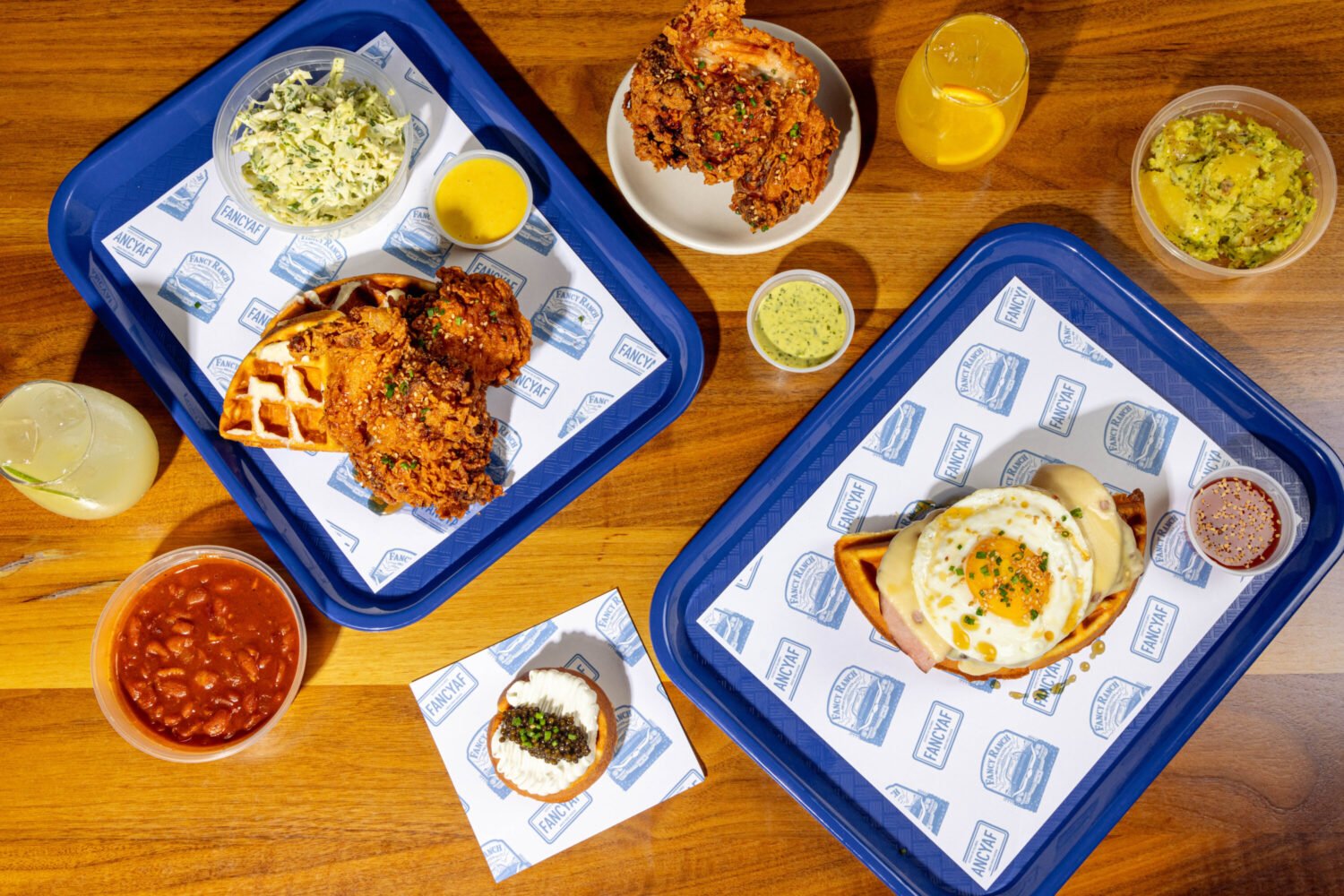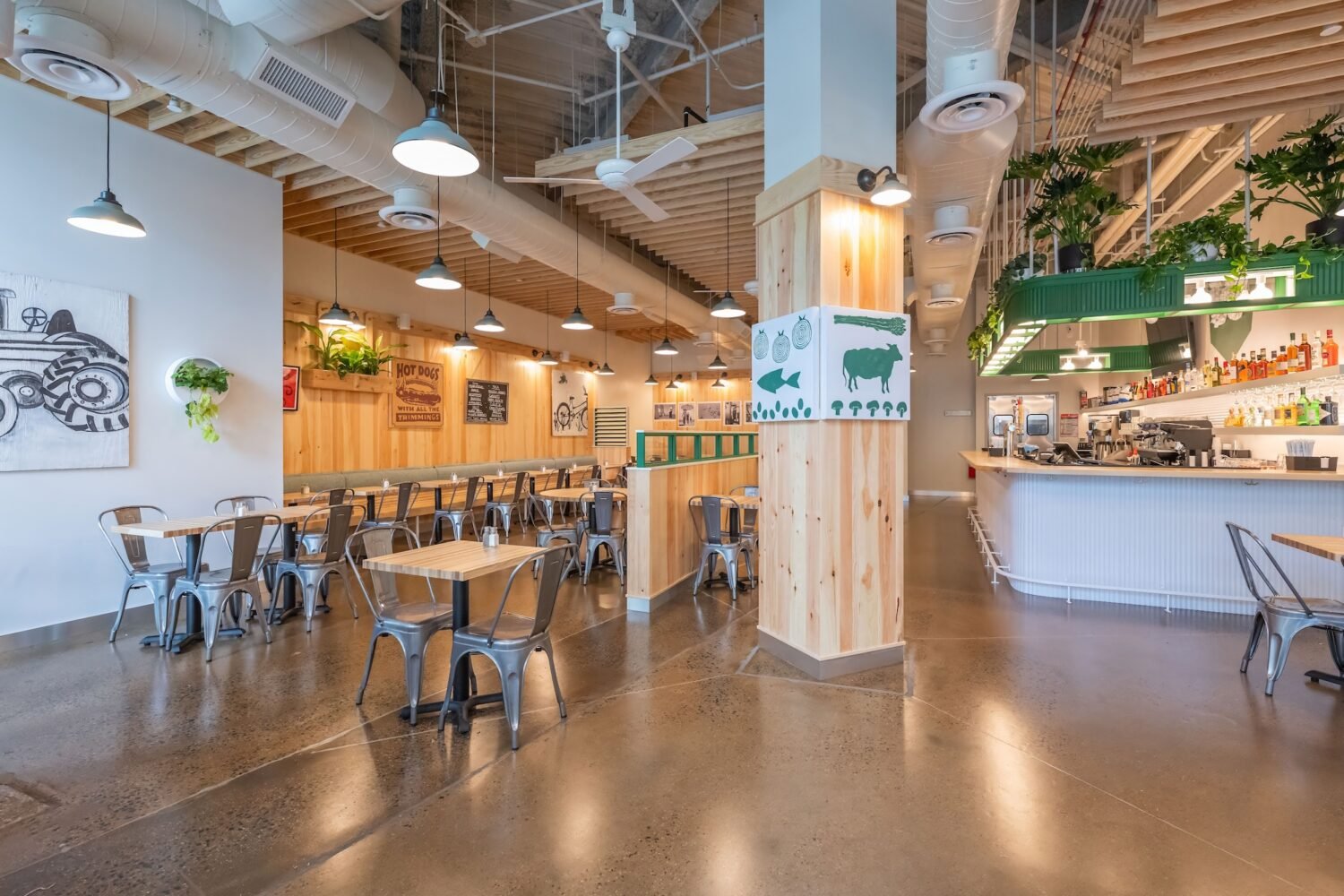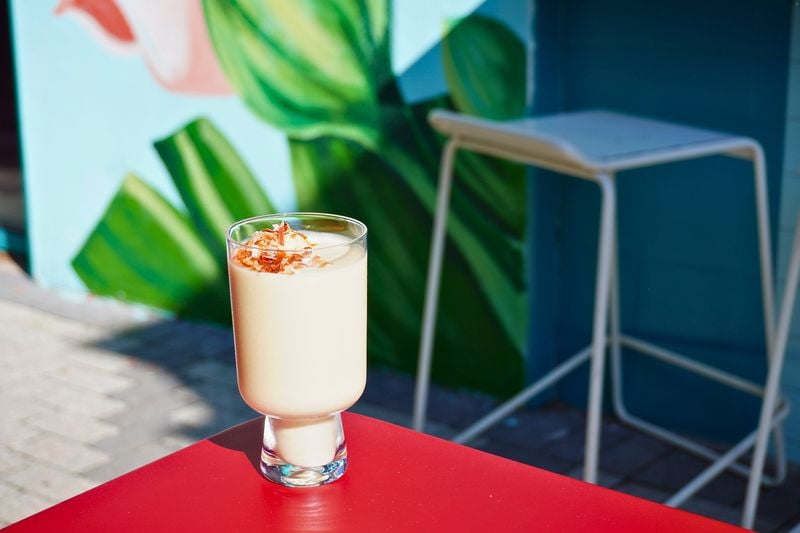Chef Kwame Onwuachi’s first restaurant, the Shaw Bijou, flopped in 2016 after less than three months. But Kith and Kin, his follow-up at the Wharf, earned him a James Beard Award, and his 2019 memoir, Notes From a Young Black Chef, was critically acclaimed. In 2020, he left DC to open Tatiana in New York, which the New York Times promptly named the city’s best restaurant.
Now Onwuachi is returning to the District with Dogon, set to open at the Wharf’s Salamander DC hotel this fall. The concept is intriguing: It’s a tribute to Benjamin Banneker, the Black scientist who helped survey DC’s borders, and Banneker’s West African heritage, which Onwuachi shares and is inspired by as a chef.
We spoke with Onwuachi as he was racing to get the restaurant open, traveling back and forth between New York and Washington. “We’re still fine-tuning,” he said, “still getting everything together. It’s a really tight menu. It’s unlike anything I think DC has seen.”
You’re currently having so much success in New York. Why did you want to come back to DC?
I spent a lot of time in DC in my professional career, and prior to that, it has always been a second home to me. My grandfather taught at Howard University. I spent my summers in DC. A lot of my family lives in DC. So for me it’s definitely like another homecoming. Coming back and creating another restaurant is important to me. I left DC when there was a pandemic. We couldn’t hug people and embrace them—and that’s why I got into the restaurant industry. I didn’t get into it for takeout. I got into it to create experiences for people. Now I want to continue to do that, and DC is a natural next step.
How are you getting reacquainted with the city? Have you had any great meals here lately?
You know, I’m definitely a creature of habit. I have checked out a couple of new restaurants, like Causa. But when I’m in DC, I’m going to El Rinconcito, I’m going to Los Hermanos, I’m going to Asian American II to get chicken wings and mumbo sauce. I always see Virginia Ali at [Ben’s Chili Bowl], you know. I always stop at Maketto and get some fried chicken and crystal-shrimp dumplings. Albi. Chercher, the Ethiopian spot. I go to a lot of the same places.
When the Shaw Bijou closed, you decided to get back on the horse and continue in DC with Kith and Kin rather than leaving. Did you feel vindicated by the good reviews for your second restaurant here?
It felt great. I think the moment was bigger than me: It was an Afro-Caribbean restaurant in a place [the Wharf] that people wouldn’t think it would be. For me, yes, the reviews were great, but I started to understand my identity a little bit more.
How so?
I understood my purpose a bit more in the culinary landscape, which is to propel my people’s culture in any way, shape, or form possible in spaces that they may say we don’t belong. I know that we do. And [the success of Kith and Kin] gave me proof that it works. It’s a concept I had to fight for, especially in that space. There weren’t many restaurants doing anything like that. So it wasn’t an “Aha, I told you so.” It was more of an aha moment for me.
Since then, there have been more Black chefs rising to prominence and more Afro-Caribbean restaurants doing interesting things in DC and getting a lot of attention. But in terms of Black chefs who have been able to reach your level, it’s still not a lot. What do you think has and hasn’t changed in the fine-dining scene since you wrote your book?
I don’t know. I’m not in other kitchens, so I can’t answer that. I’m in my kitchen. I’m trying to do the right thing, trying to inspire my people, treat people fairly, and create a great work environment. So you’ve got to ask some white chefs that, not me.
Before you opened your own restaurants, you worked in other high-end kitchens, which could sometimes be racist environments. What did that teach you about how to run your own kitchens?
Learning from those experiences, I try to just be more mindful. But honestly, that’s just a Black experience in America. It’s not subject to the kitchen. We walk through life like that, having to be mindful, having to watch what we say, having to be very careful about the way we move. That doesn’t change in the kitchen—we’re still in this country. But with that being said, I try to take into consideration what people are going through and have some empathy for people within my spaces.

When you were writing in your book about the Shaw Bijou experience, you wrote about the media obsession with the $185 tasting-menu price tag that was in the press a lot, including, most likely, our publication . . . .
Oh, it absolutely was your publication.
How do you think about that now? Do you think about price in terms of making your spaces accessible to all kinds of diners?
Yeah, I think about accessibility for people, for sure. But I’m also a business owner, so I’m thinking about, like, how are we going to recoup our losses, how are we going to pay for things? I don’t know—that’s a good question. I don’t know the answer to that. I’ll have to think about it.
Because, I mean, even [at the Shaw Bijou] I priced things accordingly to what I was selling. That’s why I didn’t understand—and I still don’t understand—all the vitriol [about the price], which definitely was racism and hate and whatever you want to call it back then. I was just starting a business, I was not committing a crime—I was creating job opportunities for people, I was raising property value in an area. So yeah, [finding the right price points is] something that any mindful business owner thinks of. Like, I know I can charge $30 for a cocktail at Tatiana, but I don’t, you know? But I do charge according to what’s going on in the area, and also what is in the ingredients. That’s not a Shaw Bijou horror that’s in my head. It’s just a sensible business practice.
And most people don’t have a full understanding of how expensive it is to run a restaurant.
Exactly. Like, I think people can save up. When I used to live in the projects, I would save up and go eat at [the high-end New York spot] Chef’s Table at Brooklyn Fare. I feel like if you really want something, you can get it. I’m not selling a Lamborghini—we’re serving food, at the end of the day. But that’s a good question.
When New York Times critic Pete Wells reviewed Tatiana, he talked about your restaurant reflecting the cultural moment. Is that something you have in mind with Dogon?
I think when you try to do that, you kind of miss the mark. When you’re reactive instead of proactive, you’re tapping into trends, and that’s not something I particularly like to do. There are restaurants that do that: “Okay, let’s create a menu that’s Instagram-worthy.” “Let’s get TikTokers in.” For me, it’s about intentionality with any project I do.
For Tatiana, for example, I looked at the land and I saw that it was old San Juan Hill before Lincoln Center was razed, and it was an Afro-Caribbean, Hispanic community, so that food would have been there regardless. And then I looked at my own culture and my own upbringing, and [the restaurant] reflected those things. I’m serving Black food and I’m playing Black music and my staff is mostly Black. It wasn’t, like, let me tap into what people are looking for right now. It was what do I want to express? I think that’s what true art is: What do I want to express? Hopefully it sticks, but I can sleep at night knowing I was true to what I wanted to do and wasn’t malleable to whatever is going on in the world.
Dogon is the same thing. I looked at the land and saw that it was on L’Enfant Plaza, and I dug a little deeper and I saw that Benjamin Banneker worked with [Pierre L’Enfant] to create the boundaries of DC. Then I looked into how did he even know how to do that: From reading the stars, and he was [thought to be] a descendant of the Dogon tribe, who were astronomers, scientists. Without West African science, there [might not] even be a capital of the District of Columbia. So why don’t I tell the West African story through DC’s influence and culture?
Your own story has been the fuel for your cooking, it’s been the fuel for your book. You’ve retold it a lot. Did you feel like it was time to move on to a story that is not your own personal narrative? Is that part of why you looked into the history of Benjamin Banneker? Did you ever feel tired of being expected to retell the story of yourself?
To be honest, yes, definitely. At times, it gets a little old. How much can I talk about myself? For me, every restaurant space has its own identity and its own energy that it gives off and you can tap into. It’s really about just challenging myself a little bit. Because, yeah, I could have just continued cooking Kith and Kin dishes for the rest of my life. Everything would have been great, and I could open up Kith and Kin New York and Kith and Kin DC and Kith and Kin LA. But for what? Would that really fulfill me?
I love the history of food, the history of how food came to be, or even just the land: The land tells so many stories. Being able to research things and find out new stuff is really exciting to me. That’s how we continue traditions: by food, by continuing to pass these recipes on and tell these stories so that the people in the past are not forgotten.
This article appears in the September 2024 issue of Washingtonian.

